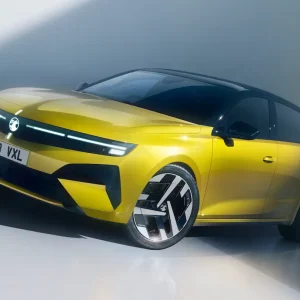Hyundai has unveiled a battery-powered version of its Kona SUV.
The Kona Electric is available with a choice of two powertrains – a long-range version with a 64kW/h battery that can cover up to 292 miles on a single charge, and a basic version with a 39.2kW/h battery, which has a range of 186 miles.
The long-range version has a 150kW motor capable of 0-62mph in 7.6 seconds, while the basic version has a 99kW motor that can do 0-62mph in 9.3 seconds.
Both powertrains have a top speed of 104mph, and take 54 minutes to reach 80% charge using a 100kW fast charger.
On the move, drivers will be able to adjust the intensity of the car’s regenerative braking system using paddles behind the steering wheel.
Driver assistance systems on the Kona Electric include autonomous emergency braking with pedestrian detection, blind spot detection including rear cross traffic alert, lane departure warning with lane keep assist, driver attention warning and speed limit information.
The car’s infotainment system, with a standard 7in or optional 8in touchscreen, includes sat-nav and compatibility with Apple CarPlay and Android Auto.
Wireless phone charging will also be available.
There’s a 7in supervision cluster showing gauges such as the speedometer and battery charge level, and the car also gets a head-up display to provide information directly in the driver’s line of sight, including speed, navigation commands and fuel level.
Compared with the regular Kona, the most prominent styling change is the closed-off front grille, while the Kona Electric is also 20mm taller and 15mm longer.
Prices and an on-sale date are yet to be confirmed.
Andreas-Christoph Hofmann, Hyundai’s European vice-president for marketing and product, said: “Hyundai Motor is already leading in future mobility solutions. By launching our all-new Kona Electric, we are pushing our ambitious eco car strategy forward.
“It’s a car of no compromise – combining an SUV body type with electric mobility.”





